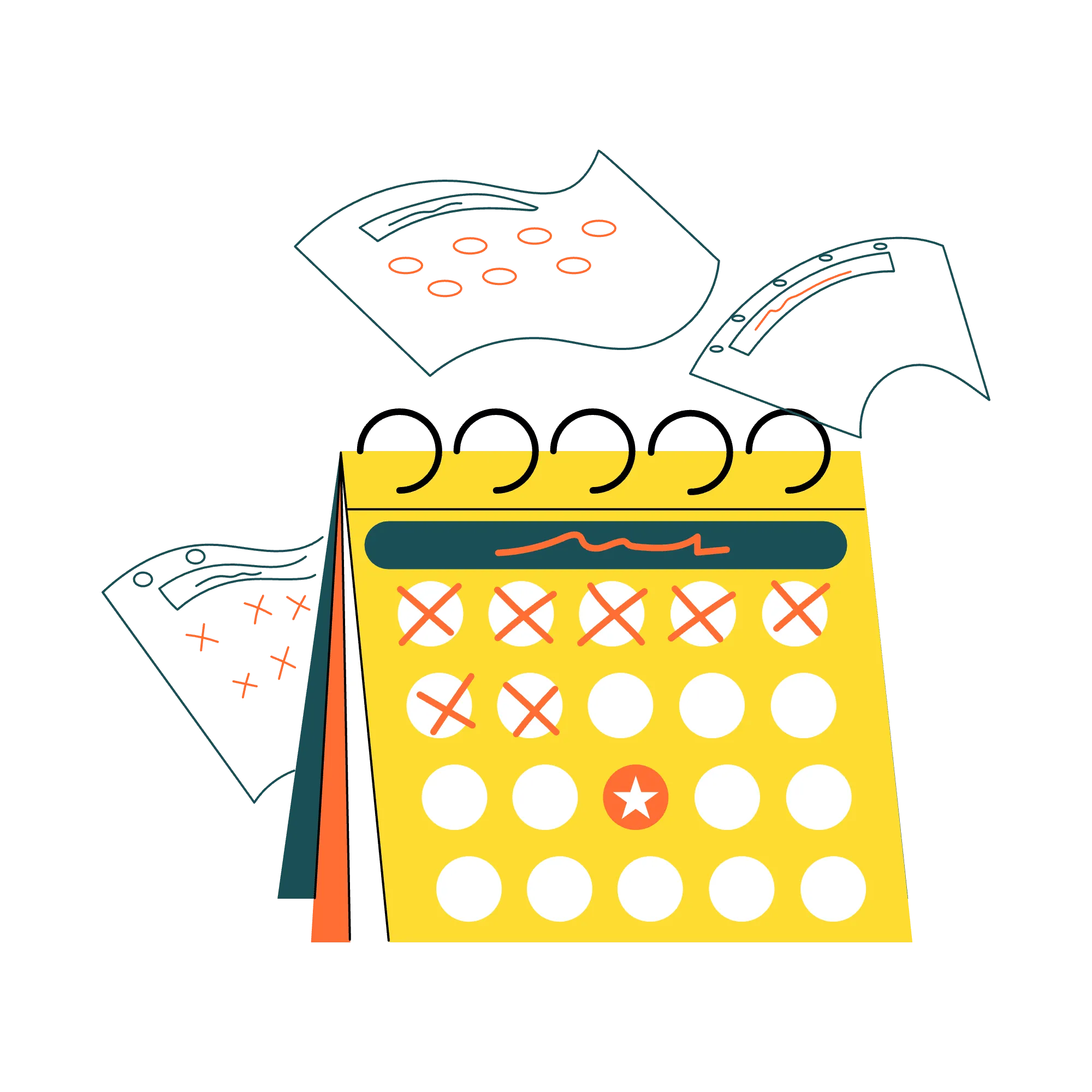Step 1 – Collect raw insight before drawing boxes
Talk to five to ten customers at different stages. Ask what triggered their search, why they nearly walked away, what delighted or disappointed them after signing. Cross-check interviews with CRM notes, support tickets and onboarding surveys. The goal is a rough list of stages, emotional highs and lows, and repeated questions.
Step 2 – Draft the high-level stages
Most B2B journeys follow seven macro-steps:
- Trigger (awareness of a pain)
- Research (information gathering)
- Consideration (short-listing vendors)
- Evaluation (deep dive, demos, trials)
- Purchase (contracts, procurement)
- Onboarding (first value)
- Expansion or renewal
Label each stage with the primary job Leah wants done, for example “prove ROI to her CFO” during Evaluation or “get first team members live” during Onboarding.
Step 3 – Map touch-points and owners
Under each stage list interactions: LinkedIn post, case-study PDF, demo call, kickoff deck, quarterly business review. Assign a department owner to every touch-point so gaps have a name next to them. Use heading four sub-sections when you document internally for Webflow, a simple bullet hierarchy keeps the map readable.
Step 4 – Attach two metrics per stage
Pick a volume metric (how many prospects reach the stage) and a health metric (quality or speed). Example: Evaluation volume = demos booked; health = trial-to-paid conversion percentage. Metrics keep the journey from becoming a decorative poster.
Step 5 – Identify the weakest link
Calculate current conversion and cycle time between stages. The stage with the lowest relative conversion or the longest delay is the present constraint fix it first. This mirrors the bottleneck logic from The Goal: optimise the slowest machine before speeding anything else.
Step 6 – Design experiments tied to the job at that stage
If Onboarding is slow, recall the job “get first team members live.” Experiments might include a guided setup wizard, a kickoff checklist, or a success metrics dashboard. Run A-B tests where traffic volume allows; elsewhere use qualitative feedback loops. Measure against the stage metrics defined earlier.
Step 7 – Build a living artefact, not a trophy slide
Store the journey in a shared doc or whiteboard tool. Review quarterly, adding new objections, removing dead touch-points and updating metrics. Link every new campaign brief to the stage it serves so creators know the customer context.
Practical examples for B2B marketers
In-house growth marketer
Your ads drive plenty of demo bookings, yet only forty per cent turn into sales-accepted opportunities. Journey interviews reveal prospects expect pre-call pricing; you add a transparent pricing calculator. Opportunity conversion climbs and sales stops complaining about lead quality.
Agency strategist
An ABM campaign wins meetings but proposals stall in legal. Mapping the journey uncovers a missing security questionnaire early on. Supplying that document immediately after discovery removes a week of back-and-forth, shrinking sales cycle length and boosting close rate.
Freelance content marketer
Website traffic grows month on month, but newsletter sign-ups lag. Journey mapping shows visitors struggle to understand whether the blog applies to enterprise or SME firms. You add an industry-specific lead magnet and segment sign-up forms. Email list growth accelerates without extra traffic spend.
Common pitfalls to avoid
- Guessing stages from inside the office – if you have not spoken to customers, your map is a hypothesis, not a journey.
- Confusing internal KPIs with customer progress – “proposal PDF generated” helps reporting but means nothing to Leah. Focus on her milestones: clarity, trust, first value.
- One-and-done mapping – markets shift, products evolve, roles change. Revisiting the map keeps it useful rather than ornamental.
Recap
A customer journey map is the clearest lens through which to view growth: every stage labelled with the job prospects hire you to do, every touch-point owned and measured. Marketers who skip this step stay busy but not effective; those who embrace it turn customer insight into campaigns, content and onboarding that compound revenue. Begin with interviews, chart seven stages, link each to metrics, fix the weakest link, and repeat. A customer-centric growth engine is less about clever hacks and more about persistent empathy turned into measurable improvement.

.webp)




